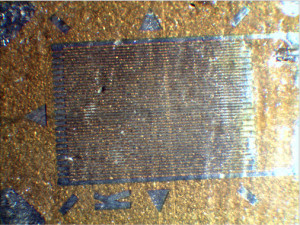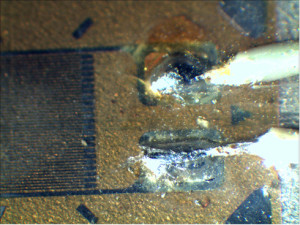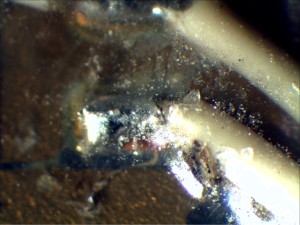Strain Gauge Resistance Changes
Gideon Analytical Laboratories received an industrial scale to analyze possible manufacturing defects and potential problems that affect “calibration” weight for long-term reliability. Many of these scales are used in heavy industry or veterinary applications. These scales also come in a variety of categories for different uses, including platform, drum, cylinder, and crane, among others.
There was some residual contamination that sat on top of the strain gauge but under the conformal coating, which can be seen in the picture at the top left. This appeared to be an electronic grade silicone coating. It had very poor adhesion to the substrate surface. Any moisture ingress (via humidity) would alter the resistivity on the strain gauge.
The solder joints had sharp edges which pierced the surface of the conformal coating. These wires could touch top pan underside. The brown material above the top solder joint is residual flux, as revealed in the picture at the top right.
The conformal coating did not adhere well to the substrate. This will allow moisture to penetrate and affect the strain gauge. The resistance across strain gauge is 3.382K ohms. Every time the solder joint or wire penetrates the coating, this is an ingress path for moisture altering the resistance readings or increasing leakage current across solder joints. There are better conformal coatings that would give better protection, exclude moisture and have superior adhesion to the one currently used.
The knowledge provided by Gideon Analytical Laboratories can be immensely useful to a variety of companies in the electronics industry. Accurate and candid analytical results about why failures occur provided by Gideon Analytical Laboratories can help companies make better business decisions in the future.

Strain gauge

Solder joint and wire break the surface of the conformal coating

Poor solder joint